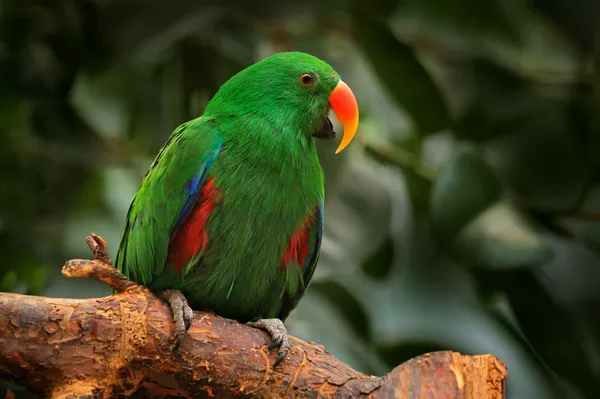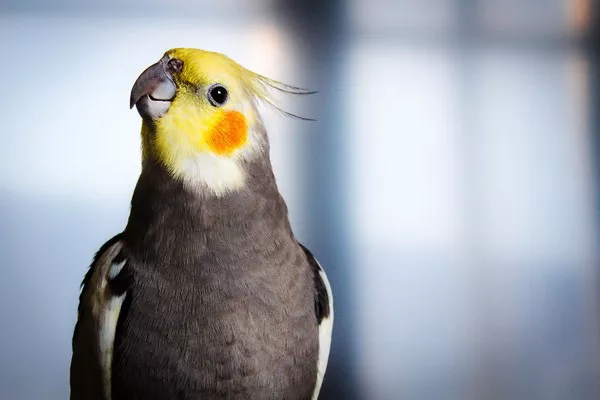Sun Conures, also known by their scientific name Aratinga solstitialis, are one of the most popular and colorful species of parrots kept as pets. With their vibrant plumage, playful personalities, and ability to mimic sounds, Sun Conures make for engaging companions. However, they are also known for being a bit more challenging to tame than other bird species. Taming a Sun Conure requires patience, consistency, and understanding of their unique behavior.
In this article, we’ll discuss the key steps involved in taming a Sun Conure, how to build a bond with them, and important insights into their behavior. We’ll also highlight some tips for training your Sun Conure to become a well-mannered and affectionate companion.
Understanding the Sun Conure
Before diving into the taming process, it’s important to understand the basic characteristics of Sun Conures. These parrots are native to South America, specifically the northeastern regions of Brazil. They are known for their striking colors—bright yellow, orange, and green with hints of blue, making them visually stunning.
Sun Conures are social, intelligent, and energetic birds. They are naturally curious and love to explore their surroundings, often using their beaks to interact with objects. In the wild, Sun Conures live in flocks, where they engage in various social activities. This natural inclination toward social interaction is one of the main reasons they form strong bonds with their human caretakers.
However, Sun Conures also have some challenging traits. They can be loud, especially when they feel neglected or bored, and they may exhibit biting behavior if not socialized properly. Early and consistent socialization is crucial to ensure that they grow into friendly, well-adjusted pets.
Step 1: Creating a Safe and Comfortable Environment
Before you begin the taming process, you need to create a safe and comfortable environment for your Sun Conure. This will lay the foundation for a positive relationship and make the taming process smoother.
Choosing the Right Cage: The cage should be spacious enough for your Sun Conure to move around freely. Ideally, the cage should be at least 24 inches wide, 24 inches deep, and 30 inches high. It should be made of durable, bird-safe materials such as stainless steel. Avoid cages with toxic coatings, as these can harm your bird.
Location of the Cage: Place the cage in a quiet, secure area of the house, but also in a location where your Sun Conure can feel part of the family activities. They thrive on interaction and may feel isolated if placed in a room that is too far away from the household activity.
Toys and Enrichment: Sun Conures are intelligent and inquisitive birds, so they need stimulation to stay mentally and physically engaged. Provide a variety of bird-safe toys like bells, ropes, mirrors, and wooden blocks. Change the toys regularly to prevent boredom.
Social Interaction: Sun Conures are social birds that crave interaction. Spending time with them daily will help build trust and create a stronger bond. If you have multiple pets or other birds, be sure to give your Sun Conure individual attention to ensure it doesn’t become jealous or possessive.
Step 2: Building Trust with Your Sun Conure
The key to taming any bird is building trust. Sun Conures, in particular, need to feel safe and secure with their owners before they will allow themselves to be handled. Here’s how to build trust:
Establish a Routine: Birds are creatures of habit, and establishing a consistent routine will help your Sun Conure feel more secure. Feed your bird at the same times every day, and try to interact with it at regular intervals throughout the day.
Approach Slowly and Calmly: At the beginning, avoid sudden movements or loud noises that could startle your Sun Conure. Approach your bird slowly and calmly, allowing it to observe you without feeling threatened. Let the bird come to you on its own terms.
Offer Treats: Positive reinforcement is an effective way to build trust. Offer your Sun Conure small, healthy treats like millet spray, fruit, or seeds when it exhibits calm behavior. This will help your bird associate you with positive experiences.
Be Patient: Taming a bird is a slow process, and each bird is different. While some Sun Conures may warm up to their owners quickly, others may take longer. Don’t rush the process; give your bird plenty of time to get comfortable with you.
Step 3: Training Your Sun Conure to Step Up
One of the first behaviors to teach your Sun Conure is the “step up” command. This command is essential for handling your bird and getting it to step onto your hand or a perch when you ask. Here’s how to train your Sun Conure to step up:
Start Slowly: Begin by placing your hand near the front of the cage, allowing your Sun Conure to see and approach it. Don’t force your hand into the cage, as this can cause the bird to become fearful.
Use the Command: Once the bird is comfortable with your hand near the cage, say the “step up” command in a soft and gentle voice. At first, your Sun Conure may not understand the command, but with repetition, it will begin to associate the phrase with the action.
Reward and Reinforce: If your Sun Conure steps onto your hand or finger, immediately praise it and offer a treat. Positive reinforcement will help your bird understand that stepping up is a good behavior.
Practice Outside the Cage: Once your bird is comfortable stepping up inside the cage, practice this behavior outside the cage in a safe, enclosed area. Continue using the same command and offering rewards for successful steps.
Be Consistent: Consistency is key when training any bird. Practice the “step up” command several times a day, but keep training sessions short to prevent your bird from getting tired or frustrated.
Step 4: Socializing Your Sun Conure
Sun Conures are naturally social birds, so regular interaction with you and other family members is essential for taming. Socialization helps your bird feel comfortable in different situations and with various people. Here’s how to socialize your Sun Conure effectively:
Introduce Other Family Members: If you have other family members, introduce them to your Sun Conure slowly and gently. Let the bird observe them first, then allow them to offer treats or speak to the bird in a calm voice. Avoid overwhelming the bird with too many new people at once.
Exposing to New Environments: Gradually expose your Sun Conure to different rooms in your house and outdoor environments. Birds often become frightened of new surroundings, but with careful introductions and positive reinforcement, they will learn to feel comfortable in new spaces.
Handling Regularly: Regular handling helps your Sun Conure become more accustomed to being touched and held. Start by gently petting or stroking your bird’s head, and slowly move on to other areas like the chest and wings. Always watch your bird’s body language—if it becomes stressed, take a break and give it time to relax.
Avoiding Negative Experiences: Avoid situations that could create negative associations for your bird, such as rough handling or loud noises. Negative experiences can slow the taming process and cause your bird to develop a fear of humans.
Step 5: Dealing with Biting and Aggression
Biting can be a common issue with Sun Conures, especially if they feel threatened or territorial. If your Sun Conure bites, don’t punish it. Instead, focus on understanding why the behavior is happening and addressing the root cause.
Signs of Aggression: Sun Conures may become aggressive when they feel scared, threatened, or protective of their territory. Signs of aggression include puffing up their feathers, lunging, and squawking loudly. If you notice these behaviors, give your bird space and allow it to calm down.
Handling Biting Behavior: If your Sun Conure bites, remain calm and avoid reacting aggressively. Gently remove your hand from the situation and give the bird time to settle down. If the bird bites during training, pause the session and try again later. Use positive reinforcement for calm behavior and avoid reinforcing negative behavior.
Redirecting Aggression: If your Sun Conure becomes aggressive during certain activities (like training or handling), redirect its attention by offering a favorite toy or treat. This can help the bird focus on something positive instead of being aggressive.
Step 6: Promoting Healthy Behavior
In addition to taming, it’s important to foster healthy behaviors in your Sun Conure. This includes providing proper nutrition, enrichment, and exercise.
Balanced Diet: Offer a variety of fresh fruits, vegetables, and high-quality pellets to ensure your Sun Conure gets the necessary nutrients. Avoid foods that are toxic to birds, such as avocado, chocolate, and caffeine.
Exercise: Allow your Sun Conure to fly and explore in a safe, enclosed area. Regular exercise helps keep your bird physically fit and prevents behavioral problems related to boredom.
Grooming: Regular grooming is essential for your Sun Conure’s health. This includes nail trimming, feather care, and beak maintenance. Regular bathing or misting also helps keep your bird’s feathers clean and in good condition.
Conclusion
Taming a Sun Conure is a rewarding but challenging process that requires time, patience, and understanding of the bird’s behavior. By creating a safe and comfortable environment, building trust, training with positive reinforcement, and promoting healthy behavior, you can develop a strong bond with your Sun Conure and help it become a friendly, well-adjusted companion.
Remember, every bird is unique, and the taming process may take time. Be patient, consistent, and kind, and you’ll enjoy a wonderful relationship with your Sun Conure that lasts for years to come.
Related Topics:



















